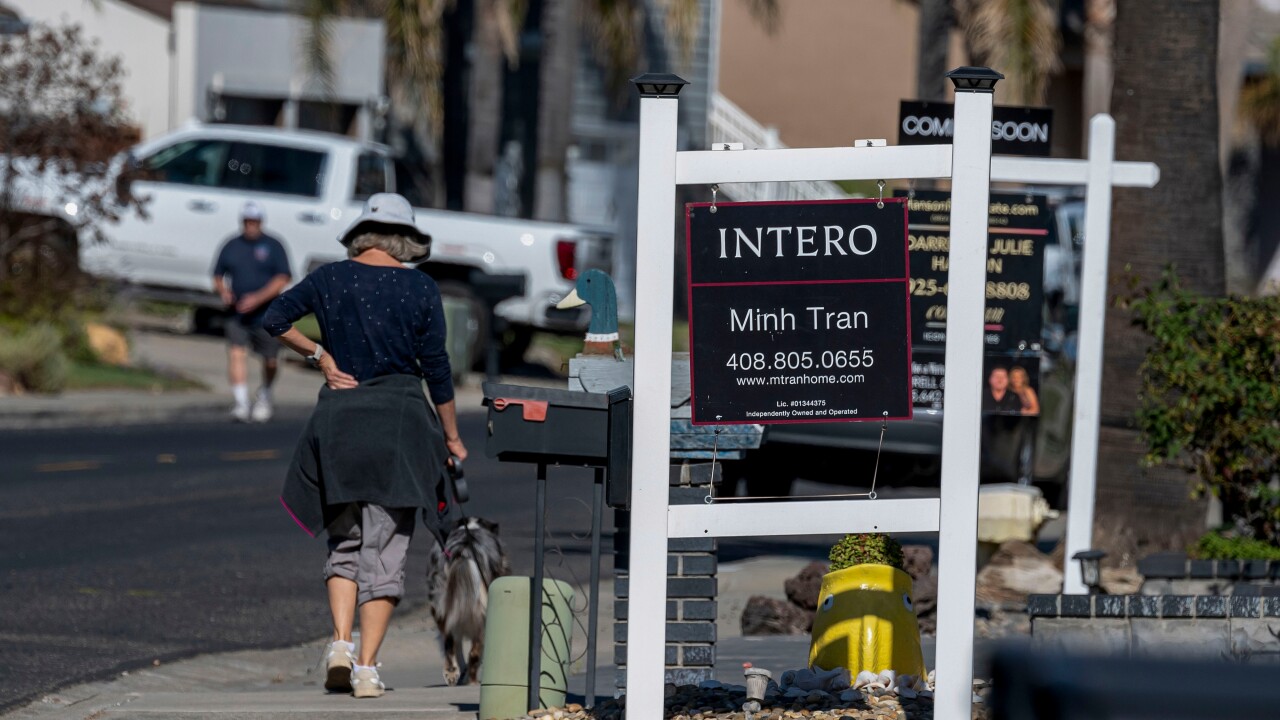As the economic effects of COVID-19 pandemic containment steps spread, commentators, regulators and lenders are focusing on the impact on the volume of mortgage defaults and foreclosures. In times of financial stress, mortgage loan borrowers are more likely to turn to Truth-in-Lending Act rescission claims, especially if they are able to argue for an extended time line to file their grievance. As the U.S. economy enters a period of uncertainty because of the coronavirus, lenders may see an influx of such claims.
With the exception of mortgages for loans to purchase or construct a primary residence, and refinances by the same lender, residential mortgages on a consumer's primary residence give the consumer a three-day right to rescind. If certain TILA disclosures such as the finance charge and the annual percentage rate are not timely delivered, the information provided is not correct, or the consumer does not receive two copies of the Notice of Right to Cancel, the time period in which the mortgage loan borrower can demand a rescission may be extended from three days after the consummation of the loan to up to three years.
If that occurs, a lender can face the prospect of having to cancel the mortgage loan, while effectively receiving back from the borrower only the amount of unpaid principal balance minus any other amounts (including any interest paid by the borrower over several months or years) the borrower has paid to the lender.
This is a powerful remedy for borrowers, and can produce significant losses for a lender. However, most lenders and servicers are today probably not focused on such rescissions, or how to prepare for or avoid them.
The prevalence of extended period rescission claims seems to follow economic trends. There have been comparatively few such claims over the past several years of economic growth and low default rates. However, during the financial crisis of a decade ago, when mortgage default rates rose dramatically, there was also a large increase in the number of demands for such extended rescissions. There may be a simple explanation for this — in good times, fewer borrowers face economic distress, and those that unfortunately do can often sell their home, since it has equity.
However, in difficult economic times, larger numbers of borrowers face higher rates of default and foreclosure, and often have negative equity in their home. With fewer means of solving these problems, some borrowers may assert an extended rescission right, either as a defensive tactic or to simply end their mortgage payment obligations. While many of these extended period rescission claims proved to be meritorious, a significant number did not.
So lenders and servicers need to be prepared to handle these requests, given the legal obligations if such rescission claims are deemed to be meritorious, and to try to ensure that the borrower can and will performs his or her rescission obligations along with the lender or servicer. While addressing such meritorious claims, lenders and servicers should also be alert to identify improper rescission claims.
What can lenders and servicers do to prepare for a possible future rise in extended rescission claims?
For starters, there are two issues that should be considered. First, lenders should attempt to ensure that borrowers have no basis for asserting an extended right to rescind beyond three days. This means three things: One, being sure that the TILA-related data such as APR and finance charge is accurately disclosed in the TRID disclosures; two, that those disclosures are timely delivered; and three, that the borrower receives the TILA mandated two copies of the Notice of Right to Cancel, advising the borrower of the right to rescind the loan. This requires well-designed and operated origination systems, post-closing reviews and strong instructions to and oversight of settlement servicers.
Lenders have recently devoted large resources to revising and improving their originations and disclosure processes. It is now essential that they continue to push for effective post-closing reviews, quality control and quality assurance reviews, as well as compliance testing of such operations steps, to ensure that there is not slippage or built-in systemic errors.
In addition, lenders and servicers should have in place appropriate and easy-to-follow guidelines and procedures for reviewing and addressing rescission claims received long after the normal three-day rescission period has expired. Given short regulatorily mandated response deadlines, it is essential to quickly determine if there is a legitimate basis for the claimed extended right to rescind (such as determining if in fact disclosures were inaccurate or if there is sufficient proof that the borrower received two copies of the Notice of Right to Cancel); if the lender or servicer should ask a court to declare that is no right to rescind; and finally, if there is a basis for asking a court to modify the rescission steps, such as by asking that the borrower be required to repay the loan (minus finance changes paid) before or at the same time that the lender cancels the loan and mortgage.
Such advance work will position lenders and servicers to minimize loses should such rescission claims once again rise. Lenders and servicers can take steps now to be prepared to avoid non-meritorious claims in the first place, and to ensure that any such claims are identified and handled properly.





